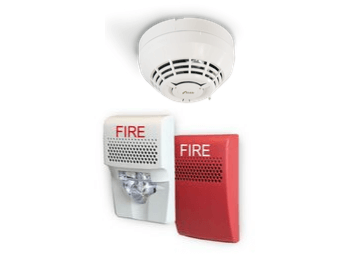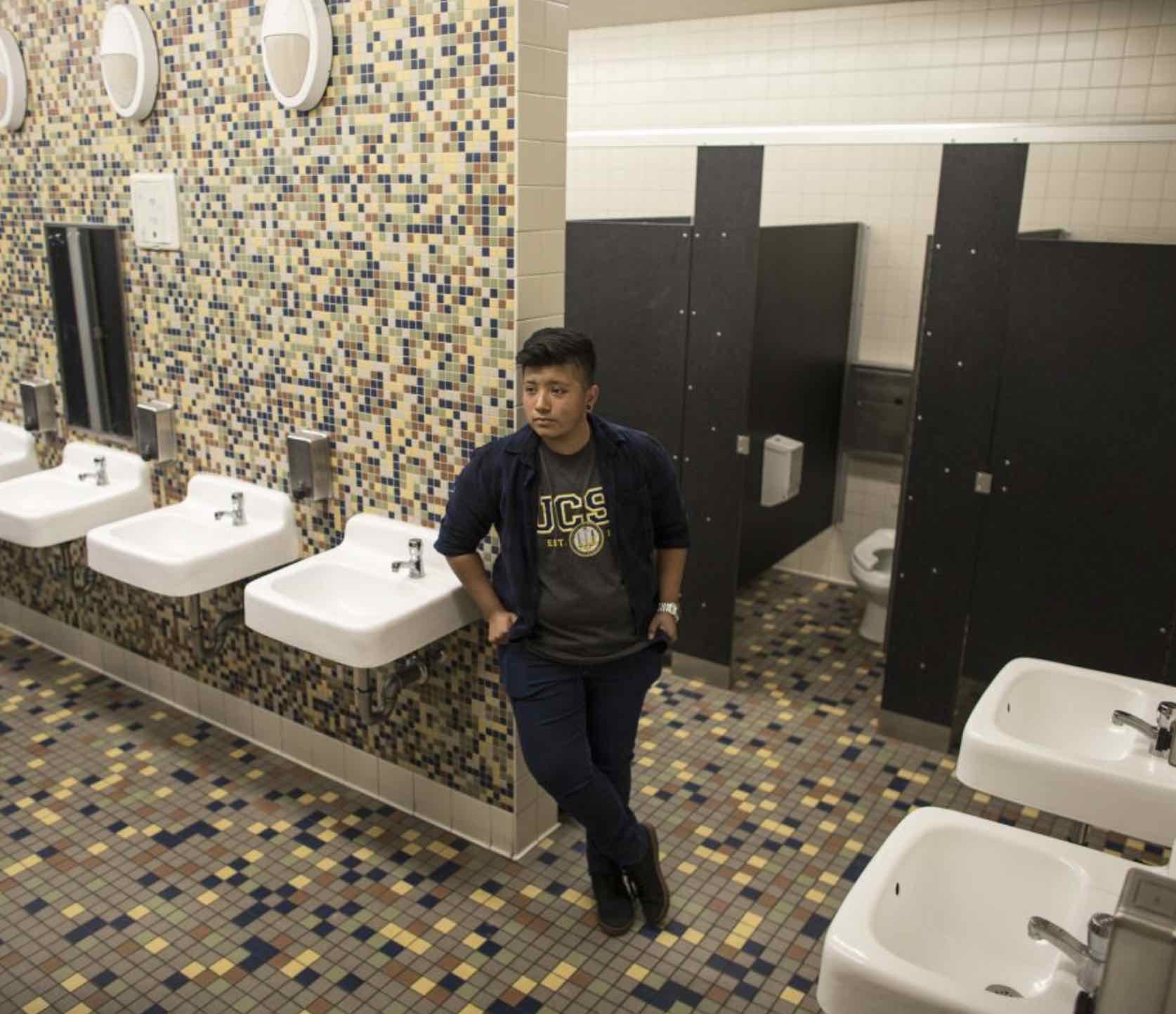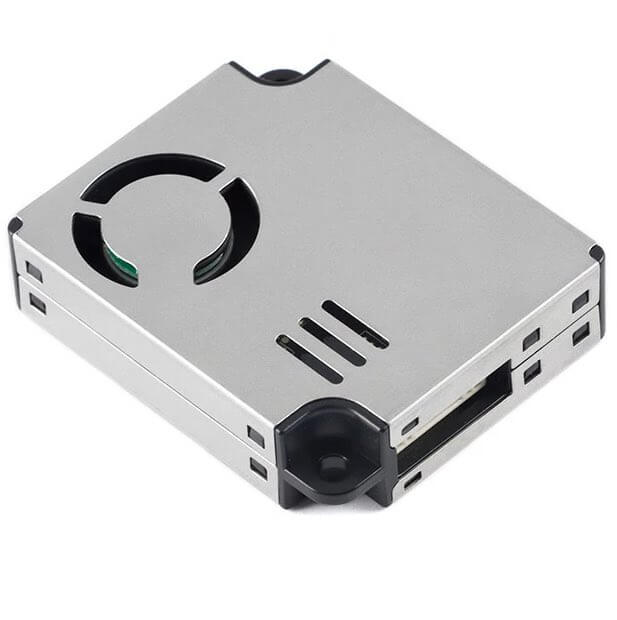What Does a Nicotine Detector Look Like? (in 2025)
Quick Content
- What Does a Nicotine Detector Look Like? (in 2025)
- Is There A Such Thing As A Nicotine Detector?
- How To Outsmart Vape Detectors
- What Triggers A Vape Detector?
- How To Tell If A Vape Detector Goes Off?
- Can Hotels Tell If You Vape In The Room?
- Can Smoke Detectors Detect Vaping?
- Can You Tell If Someone Vapes In An Apartment?
- Can You Smell If Someone Has Been Vaping In A Room?
- Will Vaping Set Off Hotel Smoke Alarms?
- Can Vape Nicotine Be Detected?
- Final Word
The world of smoking detection has evolved significantly in recent years, with nicotine detectors becoming increasingly sophisticated and diverse in their appearance and functionality. These devices, designed to identify the presence of nicotine or its metabolites, come in various forms to suit different needs and environments. From compact, handheld units resembling breathalyzers to more advanced, wall-mounted systems that continuously monitor air quality, nicotine detectors have become valuable tools in enforcing smoke-free policies and promoting health awareness. Some look like sleek, modern gadgets with digital displays, while others might be disguised as innocuous objects to blend into their surroundings. As vaping has gained popularity, newer models have been developed to detect not just traditional cigarette smoke, but also the aerosol from e-cigarettes. Understanding what these detectors look like and how they function is crucial for both users and those implementing smoking regulations in various settings.
What is Nicotine Detector?
A Nicotine Detector is a device that identifies the presence of nicotine or tobacco smoke in environments, often used to enforce no-smoking policies or detect vaping activity.
Is There A Such Thing As A Nicotine Detector?
Yes, nicotine detectors do exist and are becoming increasingly sophisticated. These devices are designed to detect the presence of nicotine or its byproducts in various forms, including cigarette smoke and e-cigarette vapor. They come in different types, ranging from handheld devices to more advanced, fixed installations. Some detectors analyze air samples for particulate matter and specific chemical signatures associated with nicotine use. Others may be designed to detect nicotine metabolites in saliva or urine samples. In public spaces, environmental sensors that can identify nicotine vapor are gaining popularity, especially in schools and workplaces to enforce no-smoking policies. More advanced models can differentiate between nicotine and other substances. It’s important to note that while these detectors can indicate the presence of nicotine, they may not always provide a definitive measure of individual consumption or impairment. The technology continues to evolve, driven by the need for more accurate and non-invasive detection methods in various settings.

How To Outsmart Vape Detectors
It’s important to note that attempting to outsmart vape detectors is not recommended and may violate policies or laws. Vape detectors are installed for health and safety reasons, and circumventing them could lead to penalties. That said, some individuals try to evade detection by exhaling vapor into clothing or towels to minimize airborne particles, using lower-powered devices that produce less vapor, or vaping in areas with good ventilation. Some mistakenly believe that certain vape juices are undetectable, but most modern detectors can identify a wide range of substances. Others attempt to mask the vapor with strong scents or by blowing it out windows. However, advanced detectors are designed to differentiate between various airborne substances and are not easily fooled by these methods. The most effective and responsible approach is to comply with no-vaping policies in areas where these detectors are installed. If you’re struggling with nicotine addiction, it’s better to seek support and explore cessation options rather than trying to outsmart detection systems.

What Triggers A Vape Detector?
Vape detectors are triggered by several factors associated with e-cigarette use. Primarily, they detect changes in air quality and composition. Most vape detectors are sensitive to particulate matter, which increases when vapor is released into the air. They also identify specific chemical signatures present in e-cigarette aerosol, such as propylene glycol and vegetable glycerin, which are common base ingredients in vape liquids. Some advanced detectors can recognize the presence of nicotine or THC in the air. Sudden spikes in humidity levels can also trigger these devices, as vaping releases water vapor. Many modern vape detectors use multiple sensing technologies, including VOC (Volatile Organic Compound) sensors and infrared technology, to improve accuracy and reduce false positives. Some can even detect changes in noise levels, as the act of vaping might produce subtle sounds. It’s worth noting that the sensitivity and specificity of vape detectors can vary, and some are sophisticated enough to differentiate between vaping and other activities that might change air composition, such as using aerosol sprays.
How To Tell If A Vape Detector Goes Off?
When a vape detector is activated, the response can vary depending on the specific model and how it’s been configured. Most modern vape detectors are designed to alert designated personnel rather than creating a public disturbance. Typically, when triggered, these devices send silent alerts via text messages, emails, or notifications to a connected app or central monitoring system. Some models may have a small LED indicator that changes color or flashes when activated, but this is often subtle and may only be visible upon close inspection. In certain settings, like schools, the alert might go to administrators or security personnel who then investigate the area. More advanced systems might be integrated with security cameras, automatically focusing on the area where vaping was detected. Some detectors log the time and location of each incident for later review. It’s important to note that there usually isn’t an immediate, obvious sign to the person vaping that they’ve been detected, as the systems are designed to be discreet to facilitate effective enforcement of no-vaping policies.
Can Hotels Tell If You Vape In The Room?
Hotels are increasingly able to detect if someone has been vaping in a room, though the methods can vary. Many hotels now employ advanced smoke and vape detectors in their rooms, which can identify the chemical signatures associated with e-cigarette vapor. These detectors are often more sensitive than traditional smoke alarms and can differentiate between vapor and other airborne particles. Some hotels use air quality monitors that can detect sudden changes in particulate matter or VOC levels, which spike when someone vapes. In addition to electronic detection, hotel staff are often trained to recognize the lingering smell of vape, which can be distinct from traditional cigarette smoke. Some hotels have begun using UV lights during room inspections, which can reveal residue left behind by vaping. While not all hotels have invested in vape-specific technology, many have updated their policies to explicitly prohibit vaping and may impose fines if evidence of vaping is found. It’s always best to adhere to hotel policies and vape only in designated areas, if permitted at all.
Can Smoke Detectors Detect Vaping?
Traditional smoke detectors are not specifically designed to detect vaping, but some may be triggered by e-cigarette vapor under certain conditions. Smoke detectors typically work by identifying particles in the air or changes in air ionization. While vape aerosol particles are generally larger and less dense than smoke particles, heavy vaping in a confined space might activate some smoke detectors, especially older or more sensitive models. However, this is not consistent or reliable. Modern smoke detectors, particularly those using photoelectric technology, are less likely to be triggered by vaping. It’s important to note that many public spaces, schools, and businesses are now installing specialized vape detectors, which are distinct from traditional smoke alarms. These devices are specifically calibrated to identify the chemical signatures and particulate matter associated with e-cigarette vapor. To ensure safety and compliance with regulations, it’s best to assume that vaping could potentially trigger smoke detectors and to follow all no-smoking and no-vaping policies in place.
Can You Tell If Someone Vapes In An Apartment?
Detecting vaping in an apartment can be challenging, but there are several indicators that might suggest someone has been vaping. The most immediate sign is often a lingering scent, which can vary depending on the e-liquid flavors used. Unlike traditional cigarette smoke, vape odors tend to be sweeter and less persistent, but they can still be noticeable, especially in smaller or poorly ventilated spaces. Visual cues might include a light haze in the air or residue on surfaces, particularly on windows or mirrors. Some people report feeling a slight stickiness on surfaces due to the propylene glycol in e-liquids. In shared living spaces, neighbors might notice increased humidity or hear the subtle sounds of vaping devices being activated. Property managers or landlords might invest in air quality monitors or specialized vape detectors for common areas or ventilation systems. However, these methods are not foolproof, and occasional or discreet vaping can be difficult to detect definitively.
Can You Smell If Someone Has Been Vaping In A Room?
Yes, it is often possible to smell if someone has been vaping in a room, though the odor is typically less intense and persistent than traditional cigarette smoke. The scent of vaping can vary widely depending on the e-liquid flavors used, which range from fruity and sweet to mint or tobacco-like aromas. Unlike cigarette smoke, which tends to linger for hours or even days, vape odors usually dissipate more quickly. However, in enclosed spaces with poor ventilation, the smell can accumulate and become more noticeable. The odor is often described as sweeter and less harsh than cigarette smoke, sometimes leaving a subtle, pleasant scent. Some people might detect a slight chemical undertone, particularly with unflavored or nicotine-heavy e-liquids. The ability to smell vaping residue can also depend on an individual’s sensitivity to odors.
Will Vaping Set Off Hotel Smoke Alarms?
While vaping is less likely to set off hotel smoke alarms compared to traditional smoking, it’s not impossible and depends on several factors. Most hotel smoke detectors use either ionization or photoelectric technology to detect smoke particles. Vape aerosol particles are generally larger and less dense than smoke particles, making them less likely to trigger these alarms. However, heavy vaping, especially in close proximity to the detector or in a small, enclosed space like a bathroom, could potentially activate some smoke alarms. The risk increases with older or more sensitive alarm systems. Many modern hotels have updated their detection systems to be less sensitive to water vapor, which reduces false alarms from showers and potentially from vaping. However, some hotels have begun installing specialized vape detectors that are specifically designed to identify e-cigarette aerosol. It’s important to note that regardless of whether vaping will set off an alarm, most hotels have strict no-smoking policies that include vaping.
Can Vape Nicotine Be Detected?
Yes, vape nicotine can be detected through various methods. In the body, nicotine from vaping can be identified through blood, urine, saliva, or hair follicle tests. These tests look for nicotine or its metabolite, cotinine, which stays in the system longer than nicotine itself. The detection window varies: nicotine is typically detectable in blood for 1-3 days, in urine for 3-4 days, in saliva for 1-4 days, and in hair follicles for up to 3 months after use. In the environment, specialized vape detectors can identify the presence of nicotine in the air. These devices analyze air samples for specific chemical signatures associated with e-cigarette vapor, including nicotine. Some advanced air quality monitors in public spaces or workplaces can also detect nicotine from vaping. It’s worth noting that while these methods can confirm the presence of nicotine, they may not always differentiate between nicotine from vaping and that from other sources, such as nicotine replacement therapies.

Final Word
Nicotine detectors come in various forms, reflecting the diverse needs of different environments and users. From discreet, wall-mounted units that blend seamlessly into room décor to handheld devices resembling sleek smartphones, these detectors prioritize both functionality and aesthetics. Some appear as inconspicuous air quality monitors, while others may be integrated into existing smoke alarm systems. Advanced models might feature digital displays, LED indicators, or connect to smartphone apps for real-time monitoring. As technology evolves, these devices are becoming smaller, more accurate, and increasingly sophisticated in their ability to differentiate between various airborne substances. Ultimately, the appearance of nicotine detectors continues to evolve, balancing the need for effective detection with unobtrusive design to suit a wide range of settings.







